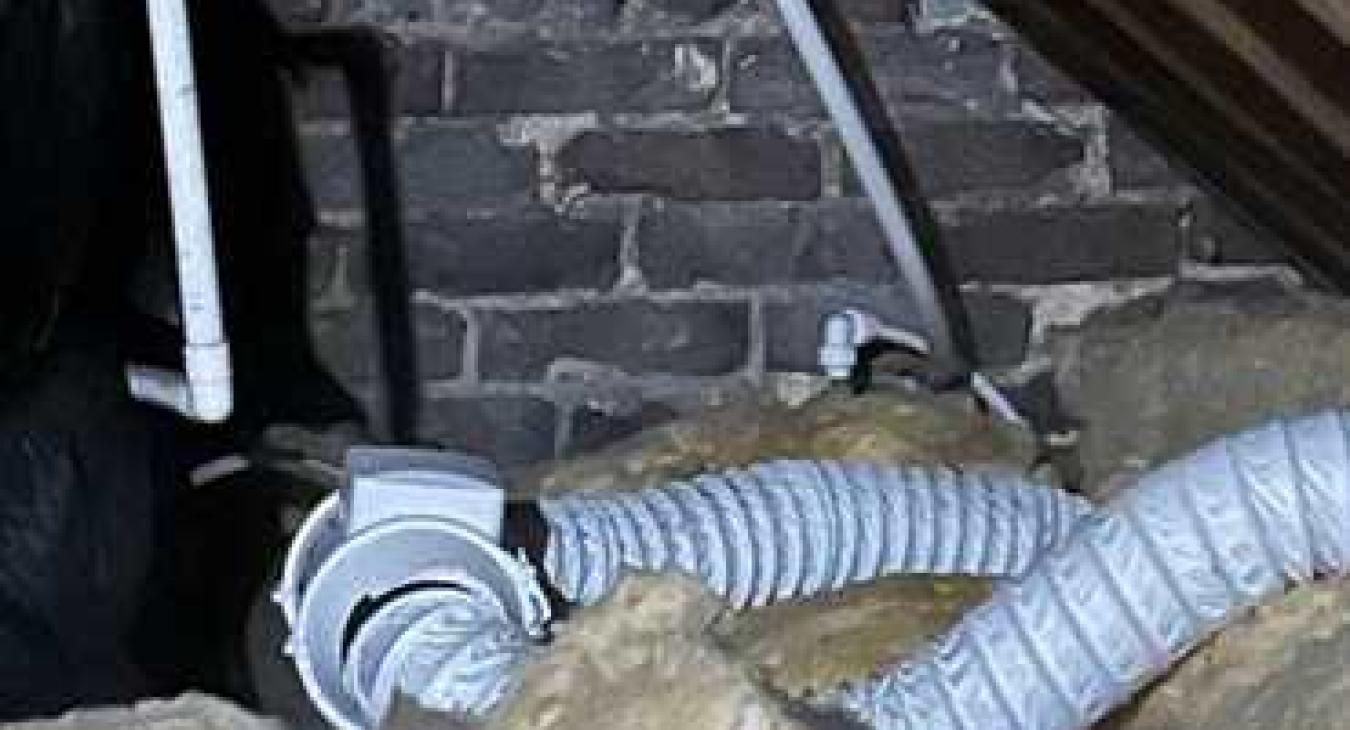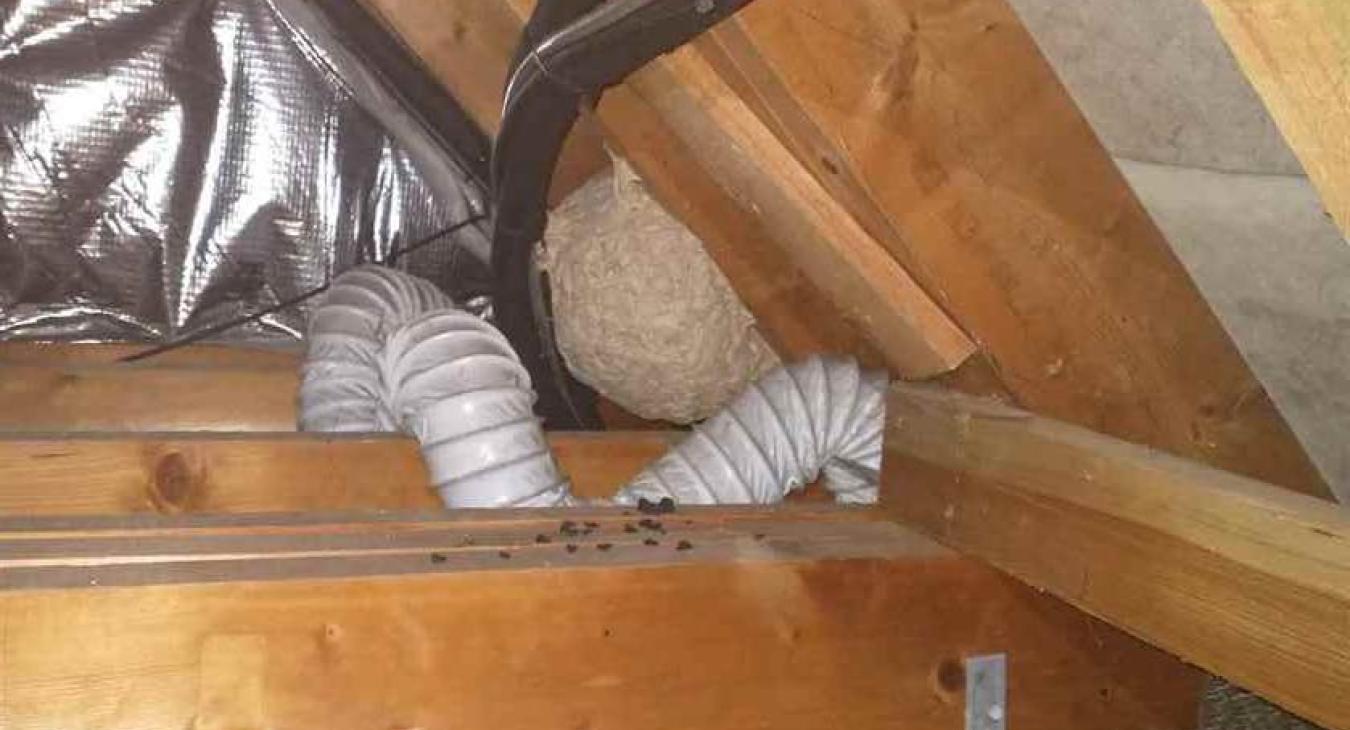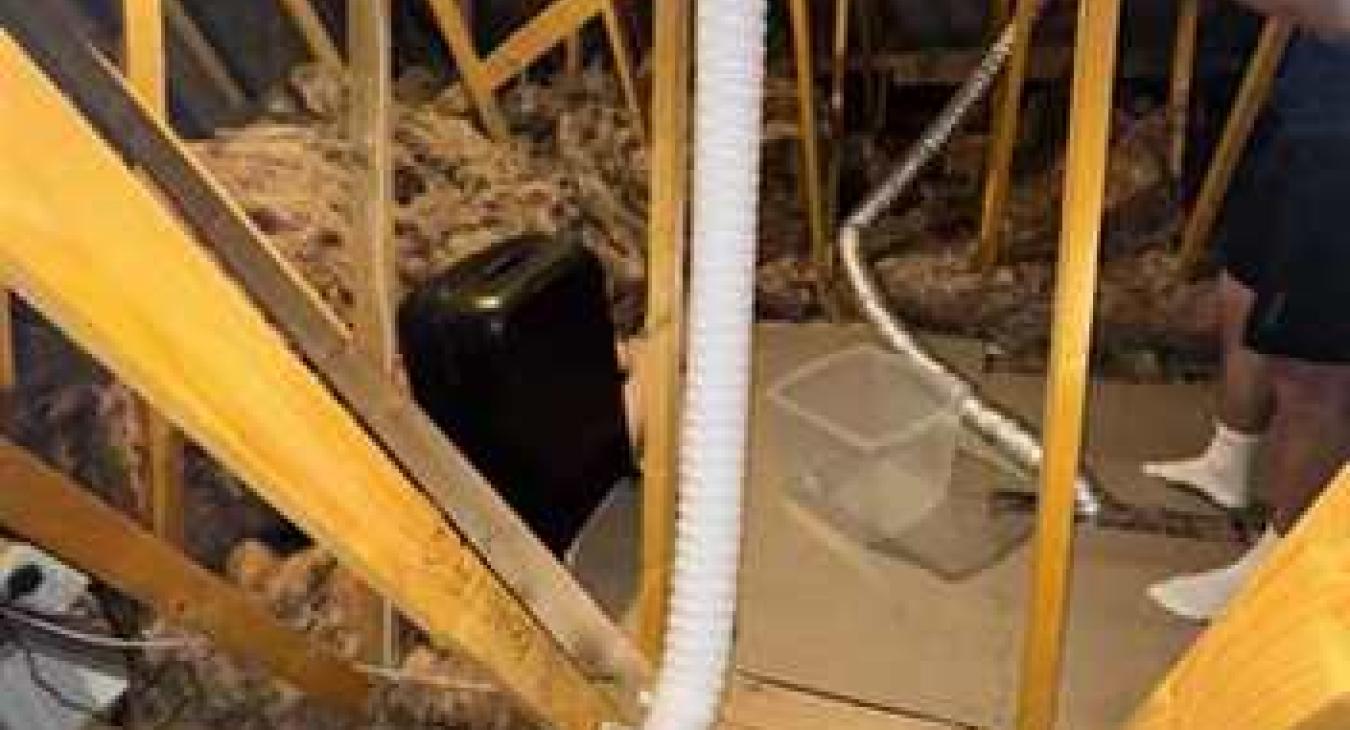Water dripping from a ceiling vent or an extractor fan is a common issue that many homeowners encounter, and a lot of them probably don't understand why! It’s not just an inconvenience; if left unaddressed, it can lead to shortened extractor fan lifespans and poor extractor fan performance, not to mention the potential water damage. In this blog, we’ll explore the potential causes of water coming through your ceiling vent or extractor fan and provide effective solutions to fix the problem for good.
The Number 1 cause of Water Leaking Through Ceiling Vents
In fact, almost completely the only cause of water dripping back into your property! If you’ve noticed water dripping from your ceiling extractor fan or vent, it is almost certainly due to condensation! Here are some of the most common reasons that allows condensation to not only start, but potentially accumulate, and for this water to then run back down into your property:
1. Blocked Ducting
Unfortunately around 80% of extractor fan installations that are anything beyond a straight out of the wall fan are generally poorly installed with little to no thought put into optimising airflow. Not only that, but over time, ducting can become clogged with dust, debris, or even bugs and other materials. A blockage prevents proper airflow, slowing all the moisture laden air down and allowing it more time to condense on its way out of the property. This eventually accumulates and leaks back through the extractor system and into your home.
2. Condensation in the Ductwork
Following on from the previous statement, condensation that is allowed to pool inside the extractor fan system also reduces the airflow, making the airflow less, giving more time for the wet air to condense! It's a rapid spiral that we see the results from every now and again. Often, the inside of the fan is completely waterlogged. Once a portion of the system is waterlogged, your extractor fan system is doing no extracting. If the condensation is happening in particular parts of the ductwork, you will find it might make its way back down into the property through the fan itself or through your ceiling vents.
3. Poor Ventilation Design
Sometimes, the issue lies in how the ventilation system is installed. If the ducting has sharp bends, is too long, or doesn’t have a proper slope, water can collect and drip down into the vent. Additionally, venting moisture into the loft space instead of outside the property exacerbates the problem.
4. Lack of Insulation
Uninsulated ductwork in the loft can cool down quickly, making condensation more likely. Without insulation, the warm air meets the cold surface of the ducting, condensing on the outer edges of the pipework and turning into water, which then trickles back down or starts to accumulate and leak.
5. Rainwater Ingress
If the external vent cover is damaged or improperly installed, rainwater can enter the ducting and make its way to your ceiling vent. This is especially common after heavy storms or if the vent is located in an exposed area. Oftentimes, this is not the cause of water coming back in!
6. Faulty Extractor Fan
An extractor fan that’s too weak or not functioning correctly may struggle to expel moisture, leading to water pooling in the ductwork and leaking through the vent. A slow or poorly fan is allowing moisture laden air more time to condense on its way out of the property, causing, you guessed it! Water to trickle and leak back into the property.
How to Fix Water Dripping from Your Ceiling Vent or Fan
Now that we’ve identified the potential causes, let’s explore solutions to stop water from leaking through your ceiling extractor fan or vent:
1. Improve Ductwork Insulation
Insulate the ductwork to prevent warm air from cooling too quickly as it passes through colder spaces, such as the loft. Proper insulation keeps the extractor fan system warmer, and reduces the risk of condensation occurring and moisture from forming inside the ductwork.
2. Check and Clear Blockages
Inspect the ducting for any obstructions, such as dust, debris, or insulation. Clear any blockages that might impede smooth airflow and prevent moisture build-up. A specialist ventilation contractor can help you with this.
3. Upgrade to a High-Performance Extractor Fan
If your current extractor fan is too weak, consider upgrading to a high-performance model designed to handle moisture-heavy environments. Not only does it reduce the condensation in the property, but it also helps move that warm, moist air out of the property before it has the chance to condense inside the extraction system.
4. Reposition and Redesign Ventilation Systems
Poorly designed systems may require a complete overhaul. Unfortunately, for many, this can be the case. And for but a few systems we come across not installed by us, there's usually areas for improvement. Ensure the ducting is as straight and short as possible, with a slight downward slope towards the external vent. This design prevents water from pooling and encourages proper drainage out of the building, rather than back into your home.
5. Install a Backdraft Damper
A backdraft damper helps to prevent cold air from entering the ducting, which can not only slow down, but cool down, that warm moisture-laden air you're trying to expel and cause condensation. It also keeps rainwater from blowing back into the system during storms.
6. Seal External Vents Properly
Inspect the external vent cover for any damage or gaps that could allow rainwater to enter. Replace damaged covers and seal any gaps to prevent water ingress.
7. Add a Condensation Trap
A condensation trap is a device that collects water before it can drip back through the ceiling vent. Installing one in your ducting system is a quick and effective solution for managing condensation. This isn't always the easy way out. If the ducting is poorly installed or the ducting route doesn't allow a condensation trap, we won't be able to use it.
8. Maintain Regularly
Regular maintenance is key to preventing future problems. Clean the extractor fan and vents, inspect the ducting, and check for signs of wear and tear to ensure the system remains in top condition. We recommend a maintenance interval of one year for all extractor fans servicing wet areas (bathrooms and kitchens)
Real-Life Examples of Fixing Ventilation Issues
Case Study 1: Water running down wall from bathroom fan in loft
A landlady for a property in Royal Tunbridge Wells asked us to go and have a look at an extractor fan that was no longer working. The tenant has noticed water coming down through the extractor but wasn't sure what the cause was. After taking a look, we found a better way of routing the ducting to utilise the existing roof tile vent, upgraded the fan, and heavily insulated the ductwork.
Case Study 2: Poor installation leading to condensation dripping
In another case in Tonbridge, a customer’s ceiling vent was dripping water from their ceiling vent in the bathroom. We noticed a number of not-so-optimal design-and-install choices, which pretty much ticked every box for how and why water comes dripping back down from the extractor fan system.
Case Study 3: Optimising a fan with water leaking through the ceiling
A homeowner in Maidstone contacted us about quite a worrying amount of water dripping from their extractor fan vent on the bathroom ceiling, with the fan being in the loft. Upon inspection, we found quite a long, nearly vertical ducting run to a roof tile vent. The system hadn't been optimised for airflow, the ducting hadn't been insulated, and a condensation trap hadn't been fitted.
Case Study 4: An extractor fan we happened upon in Chattenden, Hoo, Kent
A client asked us to pop our heads up in the loft to check out their extractor fan systems which were performing so poorly they never really bothered even turning them on. Fortunately, they don't use this system and are a semi-retired couple who's kids have all flown the nest. If this was a busy young family using this system, they would certainly have more problems than poor airflow!
Why Choose Professional Help for Ventilation Issues?
While some ventilation fixes are straightforward, many require the expertise of a professional. Improper installation or a failure to address underlying problems can lead to recurring issues, solving issues whilst creating others, and even more extensive damage. Professional technicians can:
- Diagnose the root cause of the problem.
- Recommend the best solutions tailored to your home’s needs.
- Ensure proper installation and long-term effectiveness.
- Save you time, effort, and money in the long run.
Prevent Future Water Leaks with Proper Ventilation Installations
Preventing water from dripping through your ceiling vent (and a number of other bugbears our clients sometimes suffer) starts with good designs and good installation practices provided by a professional ventilation service. By addressing issues like condensation, blockages, and poor design, you can enjoy a dry, condensation free, and mould free home.
Want to hear more about how we stop condensation with residential ventilation?
What about other projects we've carried out in Maidstone, Tonbridge, or Royal Tunbridge Wells?














